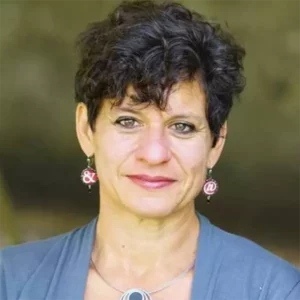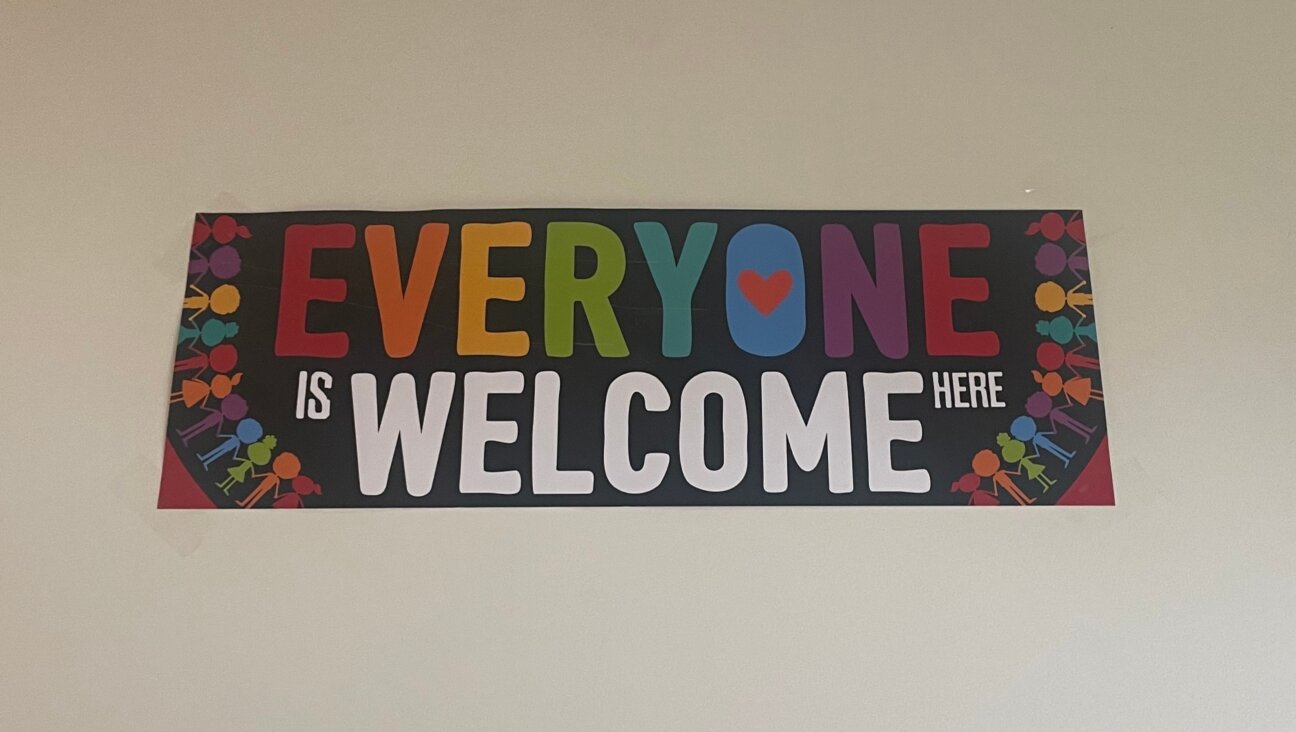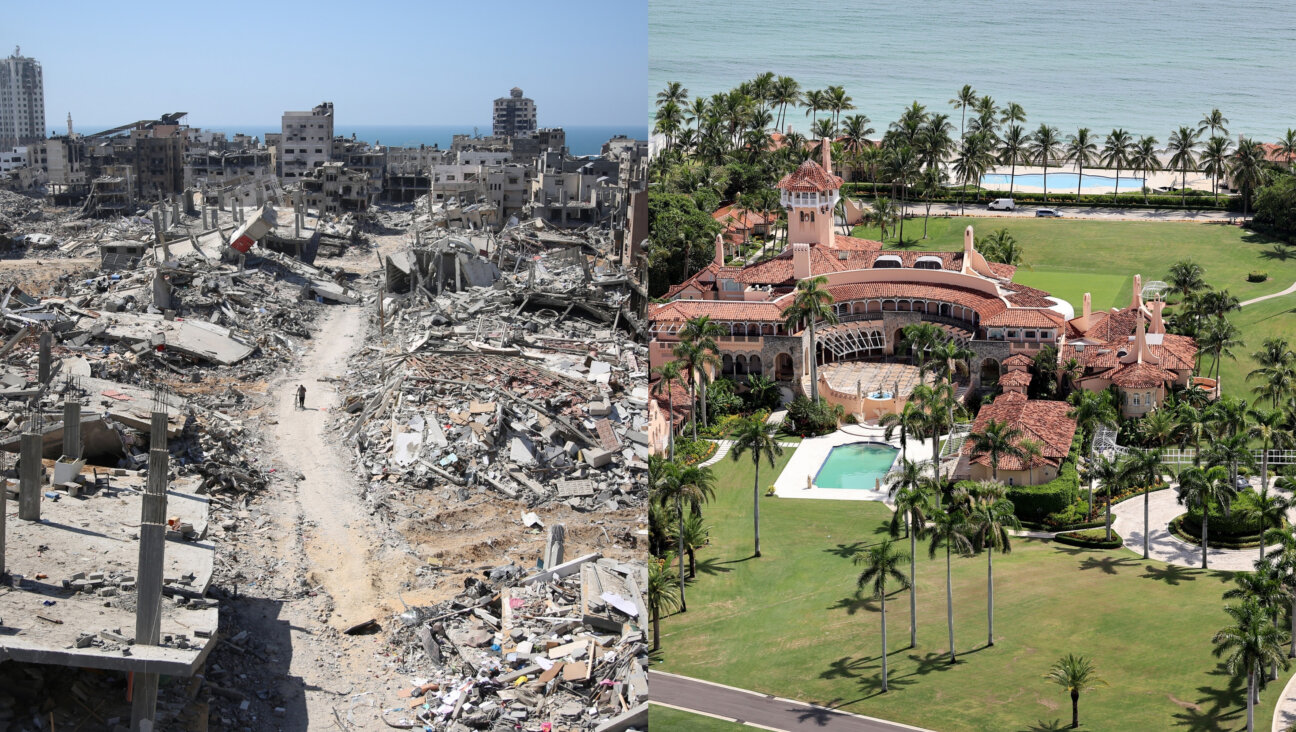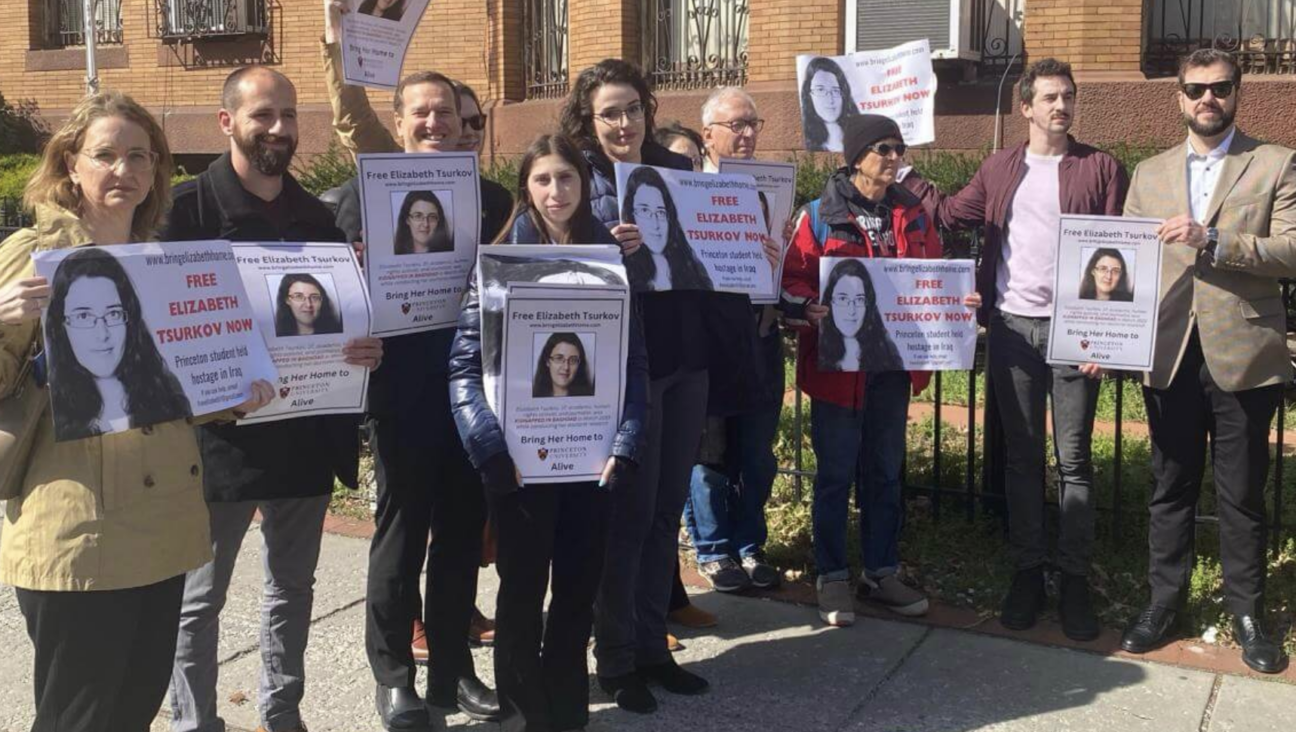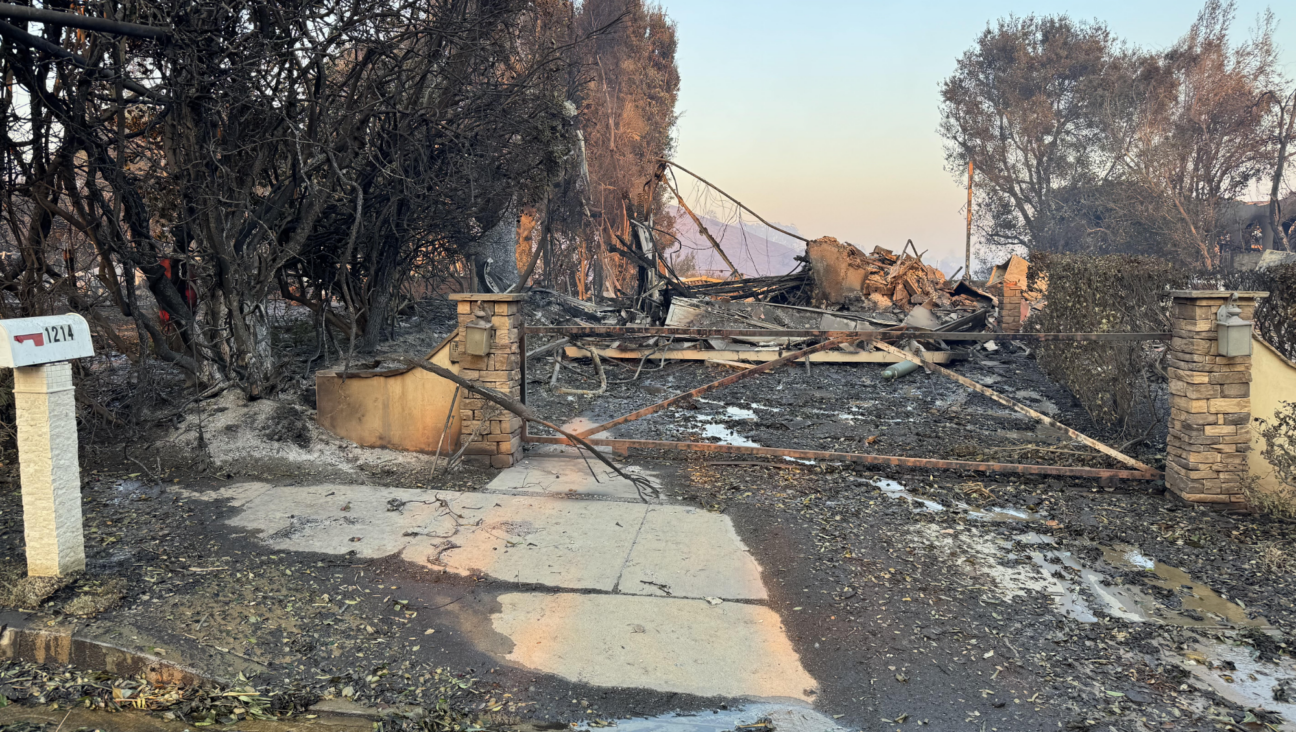‘All we can do is type’: Student journalists are essential in this fraught moment
The editor-in-chief of the Yale Daily News hardly slept for a week amid the crackdown on campus protests against Israel’s war in Gaza
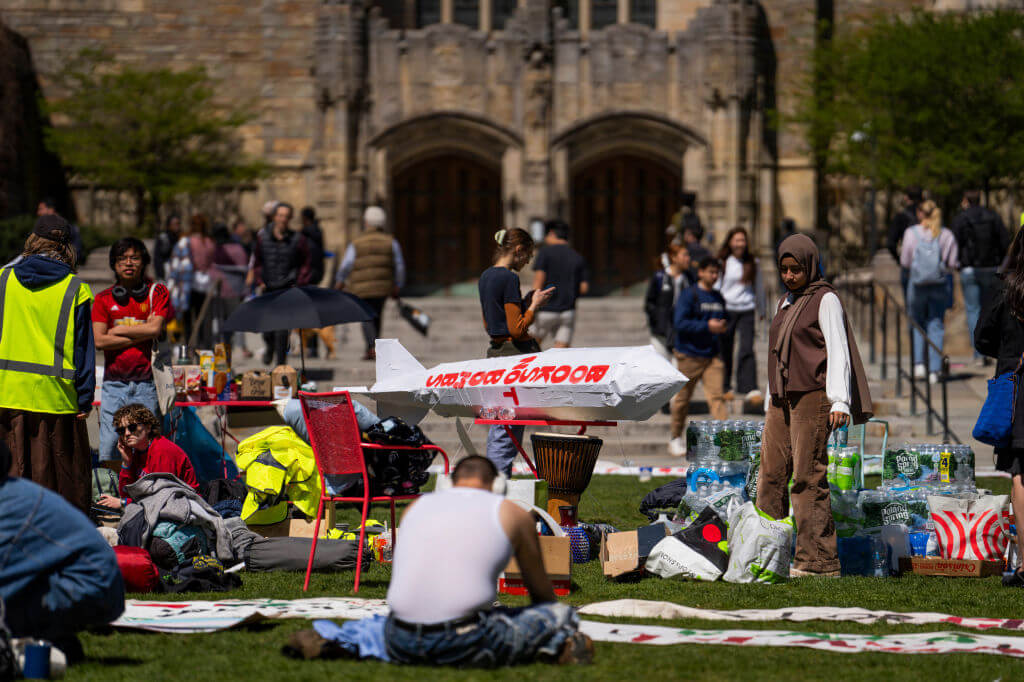
In a week when campus protests and subsequent arrests have swept the nation, student journalists are working overtime in an essential role. Photo by Joe Buglewicz/Bloomberg via Getty Images
Anika Arora Seth, editor-in-chief of the Yale Daily News, had caught maybe two hours’ sleep when a source called at 6:12 a.m. Monday to alert her that the police were about to start arresting the pro-Palestinian student protesters who’d been camping on Yale’s Beinecke Plaza for days.
Seth, a 20-year-old junior, raced across campus, but could not get beyond the yellow caution tape blocking the plaza, despite identifying herself as a journalist. So she and a reporter climbed atop a nearby cement wall and sat cross-legged with their phones and laptops, shooting photos, tweeting out news tidbits and ginning up a live blog about the impending arrests.
Until several officers threatened to arrest them unless they got off the wall.
“‘I’m press, so you should be allowing us to see this and cover this,’” Seth recounted saying to them. “Don’t I get a warning first?” she asked. “This is your warning,” came the reply.
“And then I’m feeling cheeky and very tired, so I’m like, ‘Don’t I legally get three warnings, actually?’ Because I do,” Seth told me. “That was not a smart thing for me to say. This cop goes, ‘OK, 1-2-3, those are your warnings. I’m going to arrest you now if you don’t get off the wall.’”
Seth climbed down, and scrambled to find a new vantage point as the officers loaded more than 40 protesters into shuttle buses and charged them with misdemeanor trespassing.
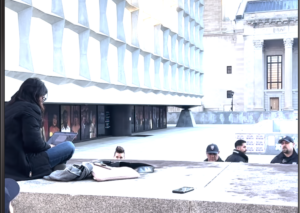
“My role was to cover, and not get arrested in that moment,” Seth said. “Some of the people who are arrested are our friends, friends who we love and know very well,” she added. “All we can do is type, type, write, write, report, report.”
Yale is among 40 colleges and universities nationwide where protesters have set up Gaza solidarity encampments since April 18, according to local news reports compiled by The New York Times, and one of more than a dozen where the police have been called to intervene. The explosion has exposed anew university leaders’ ineptness at balancing free speech and protections against antisemitism and other hatreds. Student journalists like Seth are on the battlefront lines.
I met Seth a few months ago, through my involvement with a fellowship for student journalists at Yale, where I graduated in 1992 and was managing editor of the Daily News. She is a remarkable young woman, the daughter of immigrants from India and a double-major in biomedical engineering and women’s, gender and sexuality studies. All that plus scores of hours a week running the News.
Last fall, Seth had to vacate her off-campus apartment for a week while being doxxed with death threats over what she fully acknowledges was a mishandling of references to the sexual violence Hamas committed during the Oct. 7 terror attack on Israel. This week was her last as editor-in-chief and president of the YDN, which we alums know as the Oldest College Daily in America, and it was a doozy.
Things started heating up last Friday, ahead of a Saturday meeting of the Yale Corporation, which is not only being pressured by activists to divest from companies that manufacture weapons used by Israel, but also nearing the end of a search for the university’s next president.
Seth was on a field trip that day, visiting The New York Times headquarters in Manhattan with a journalism seminar. She sent a news alert from the Metro North train back around 10 p.m.: 400 protesters on Beinecke Plaza, setting up an encampment, police on the scene. Then she took an Uber to the plaza to join her team of 30-some reporters, editors, photographers and videographers.
“There have been a lot of protests all year, and this was just the angriest of them all,” she recalled. “Not that they were violent — I didn’t personally see any violence on the scene. But the air just feels vitriolic. They’re not going anywhere. They’re pissed.
“A significant portion of them went into the weekend of protest wanting arrests to happen,” Seth added. “To be as public and as disruptive and cause as much noise as possible.”
The Corporation meeting the next morning was in an undisclosed location. So YDN reporters staked out The Study at Yale, the hotel where the trustees typically stay, then trailed several to a building on Science Hill. There, they chatted up idling limo drivers about who was departing when, trying to figure out how the agenda was proceeding.
“So we have two teams of reporters — one up on Science Hill, which is a 25-ish-minute walk from Beinecke, and they’re counting who’s entering, who’s exiting, trying to figure out when the lunch break is, when they’re going to end the meeting,” Seth said. “And then we have another team that’s keeping an eye on the protests. There’s a group chat that’s insanely active. It’s so cool to watch these freshmen and sophomore reporters who joined the paper a semester ago just show a lot of resourcefulness.”
At one point, a Yale police lieutenant told the Science Hill crew not to talk to the drivers, which they dutifully reported in their live blog, adding: “The News did not agree to these terms,” which, Seth said later, “I just think is so funny.”
All this was happening on the same day the paper was supposed to be holding elections for next year’s editorial board — an intense, emotional affair that can last 24 hours.
Seth had already postponed elections to Sunday because of the Corporation meeting. But she had to prepare — and she also had not one but three other commitments on Saturday: a celebration for Holi, the Hindu festival of color; the first meeting of the senior society she’d just been tapped into; and a formal she’d agreed to go to with a friend.
“I’m, like, trying really hard to be everywhere all at once,” Seth recounted. “I’m trying to get comfortable with delegating. I’m like: I don’t have to be here every minute of every day; I have a really competent staff that can do this. But I’m also, like, I need to be here in case something goes haywire.
“So I go to this Holi festival thing with all of my South Asian friends for, like, 20 minutes,” she continued. “I go to my society thing still drenched in multicolored rainbow powder. I feel very silly, but I’m like it’s fine, they’ll get it, I’m a very busy person. I leave my society thing, I run home to shower, and I’m at this formal for exactly 7 minutes when they text me and then call me and say you should come back, it’s getting really aggressive again.”
So Seth pulled on sweats over her little black dress and headed back to Beinecke. By 1:30 a.m., she had solid though off-the-record confirmation that no arrests were forthcoming, and sent her team home — they had to be at the News building by 8 to start elections, after all. Seth herself went straight to the building to finalize plans for the election, sleeping maybe 90 minutes on the YDN couch.
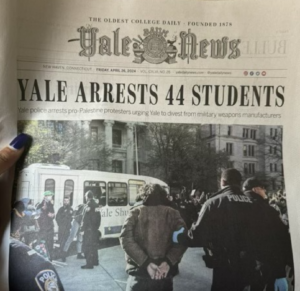
“I’ve kept a toothbrush and toothpaste in the office since Oct. 12,” she said. “That’s still there, and still running strong, which is good.”
I’ve been pretty worried all week — and, to some extent, all year — about the crackdown on free speech on our campuses, where it is a critical pillar of not only a liberal arts education but our very democracy. My conversation with Seth made me more confident that, at very least, the student press will be there to report on it.
I asked her what the national media is getting wrong about the protests that student journalists can see more clearly.
“These headlines that are characterizing these protests as violent, as showdowns, as things like that, I don’t think are true at all,” she said. “I mean, yes, Friday felt very angry in the air, but it really at its core was people chanting things in a megaphone — perhaps aggressive things in a megaphone — and then sleeping in tents for three nights straight.
“They have, like, a reading circle, a poetry-writing activity, letter writing, right? All of these really just, like, nonviolent forms of sit-in protest,” Seth added. “I find it frustrating honestly, when the headlines that I see are, like, ‘Violent chaos rocks Yale’s campus’ or “Violence runs amok at Yale.’ That’s not what’s happening.”
Though her counterpart at the Columbia Spectator has been interviewed by CNN,
MSNBC, Forbes, the Columbia Journalism Review, NY1 and the Daily Beast, Seth has shunned cable-news requests. She did do The Political Scene, a podcast of The New Yorker, which is hosted by another YDN alum, and has been fielding numerous requests to pick up her photographers’ and videographers’ work.
“I’m like yes, yes, yes, yes, yes, yes: take it, credit them, take it, credit them,” she said. “I’m wearing three hats at once. Reporter Hat, trying to report and edit all of these stories, push the live updates. Then I’m EIC and President, so President Hat is like, are they eating? Are they sleeping? Are they well and can I get them picked up by national outlets?
“And then Hat Three is: I’m also a Yale student, who is waiting for my friend to come back from, like, prison. That’s tough, too. It was this very difficult balancing act of these three really intense emotional experiences.”
When we spoke on Thursday, Seth had just gotten back from her gender-studies class, Theory and Politics of Sexual Consent — the first class she’d been to since the Thursday before.
“I just don’t have time to go to class anymore, but my friends who do go to class have been texting me saying that kids in their lecture are on the YDN Twitter or live blog, refreshing for updates, and that’s so heartening,” she said. “I think people in the newsroom are very rightly proud of their work the last few days, and I’m very proud of them.
“And it’s been cool for me personally. I felt like the newsroom was literally going to end my life last semester. And going from that to this has been pretty awesome.”
We Newsies like to call the paper “the best journalism school in America.” One of the special things about the place is the building at 202 York Street, which is owned by the Oldest College Daily Foundation, not the university, ensuring its independence.
There’s a room on the first floor that is wallpapered with historic front pages. My board put up one about the outbreak of the first Gulf War in 1991, and another about the on-campus murder of a Yale hockey player, whose funeral I covered.
Seth will add her final front page, about the arrests, making us all proud.
A message from our Publisher & CEO Rachel Fishman Feddersen

I hope you appreciated this article. Before you go, I’d like to ask you to please support the Forward’s award-winning, nonprofit journalism so that we can be prepared for whatever news 2025 brings.
At a time when other newsrooms are closing or cutting back, the Forward has removed its paywall and invested additional resources to report on the ground from Israel and around the U.S. on the impact of the war, rising antisemitism and polarized discourse.
Readers like you make it all possible. Support our work by becoming a Forward Member and connect with our journalism and your community.
— Rachel Fishman Feddersen, Publisher and CEO



